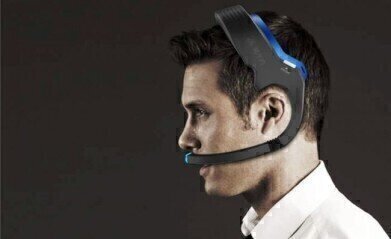Air Monitoring
Is Wearable Air-Pollution Technology Set to Sweep the Globe?
Dec 08 2014
Air pollution is a growing problem, particularly in China, where smog masks are worn by many. And although smog masks protect wearers from potentially harmful smog particles present in the air, they also stifle every day communication. Designed to shield both the nose and the mouth, traditional smog masks are uncomfortable, inconvenient and – let’s face it – a little odd in appearance, so alternatives, such as the Wind Six wearable air purifier, are being developed in the hope that those living in polluted cities will soon be able to breathe a little more easily.
Wind Six
The Wind Six wearable air purifier resembles a standard headset, meaning the wearer’s face remains largely uncovered. In place of a microphone, the headset boasts a precision filter, which purifies the surrounding air by up to 99.99%, and a range of sensors and monitors that “read” the wearer’s environment, alerting her to high levels of air pollution. In theory, such technologies would allow wearers to avoid highly polluted areas and destinations.
While the Wind Six wearable air purifier is yet to hit the shops, demand for intelligent, comfortable solutions to China’s air pollution problem are thought to be in high demand. Increasingly, companies across the globe are designing wearable products which incorporate some sort of pollution-busting or pollution-detecting technology – be they headsets, jackets or even backpacks. Scientists in Edinburgh, for example, are currently using hi-tech backpacks to measure air pollution levels and the effects of air pollution on the human body, while children’s smartwatches and key rings, which feature pollution sensors and GPS technologies, are being marketed to health-conscious parents in Japan.
While the ideas behind these new “smart” products appear sound, designers still face a number of practical and aesthetic challenges. Currently, many of the technologies being incorporated into wearable products are cumbersome, unattractive and/or consume a great deal of energy. Until real solutions can be found to these sorts of problems, wearable technology is unlikely to take off.
Clever Solutions ... Or Just a Distraction?
While cynics argue that we should shift our attention away from creating devices that shield us from the effects of air pollution and look towards creating a smog-free world, others insist wearable technologies are an important step in the right direction, alerting us to the invisible dangers present in urban environments.
Perhaps, in five, ten or twenty years, we’ll all be wearing garments able to protect us from the effects of air pollution. Not only will these garments filter the air we breathe, protecting our bodies from harmful substances, they will generate usable data relating to the environments in which we live, enabling us to work towards creating pollution-free zones.
For more information on this fascinating topic, take a look at: The Future of Air Monitoring and Wearable Technology. Alternatively, in a recent article we looked at the BB.Suit 2.0 – it features an integrated air quality sensor and can scrutinise and map different levels of air pollution. You can read all about it at: Introducing the Polluted Air Purification Onesie.
Image Credit: LeiPhone
Digital Edition
IET 34.2 March 2024
April 2024
Gas Detection - Biogas batch fermentation system for laboratory use with automatic gas analysis in real time Water/Wastewater - Upcycling sensors for sustainable nature management - Prist...
View all digital editions
Events
Apr 22 2024 Hannover, Germany
Apr 22 2024 Marrakech, Morroco
Apr 23 2024 Kuala Lumpur, Malaysia
Apr 23 2024 Kintex, South Korea
Apr 23 2024 Edmonton, AB, Canada


















